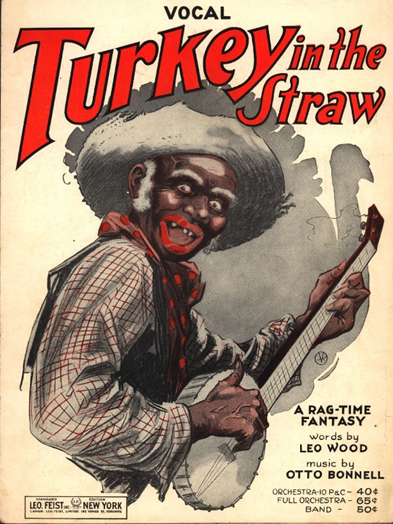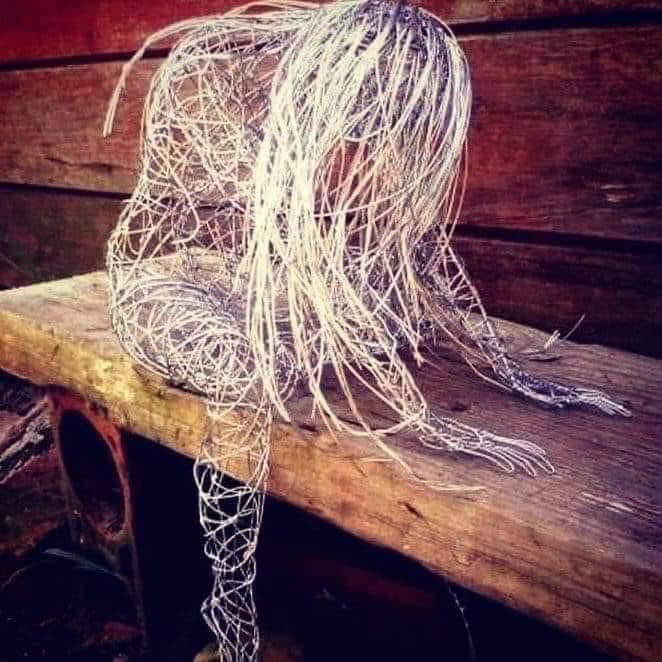Lest we forget -yes, there are Black male stereotypes
"I am what time, circumstance, history, have
made of me, certainly, but I am also, much more than that. So are we all."
– James Baldwin
In a previous chapter, we argued that to destroy the
alliance forged between the Irish and African servants, the White planter class
created the myth of Whiteness and convinced the Irish that they were White.
Along with this myth came the presumption of privileges presumed to be associated
with being White. These myths of Whiteness and privilege continue to be
utilized, as seen in the most recent M.A.G.A. movement where poor Whites are
being urged to once again serve as the frontline troops for the White war
against Black, Brown, Indigenous, and Asians that would dare to presume equality.
What was not discussed, and the focus of this last section, is how this same
process created a whole slew of stereotypes purposefully aimed at the "Black
man." Fear of the Black man runs
deep, and the only real way devised by the White structure was to convince the Black
man that he, not the system, was the problem. The weapon used for this purpose
was the multiple ways his identity was manipulated to produce his worst nightmare.
Your
History II by James Pate. Charcoal
A search of the internet reveals a whole litany of words used to describe the black man. Some nicer words include: dim-witted, bumbling, lazy, angry, sexually aggressive, forsaken, sad, betrayed, suffering, unloved, and ridiculed. And the most virile would be ape, Coon, Jungle Bunny, Kaffir, monkey/porch monkey, zibabo, spade, spook, and of course nigger/nigga(h). Attached to these words would be such stereotypical characters as Zip Coon, Sambo, Jim Crow, Uncle Tom/Uncle Remus, and Buck/Mandingo. And for most of this same period, there has been a constant rejection of these images as Black men and women have fought for the very soul of our community. Tracing these stereotypes to their origins helps us understand how and why they came into being and how and in what ways Blacks continually recreated their identities. Our journey begins with Zip Coon.
Zip Coon -A.K.A. Slick
Who is he? They call him Slick
(Slick)
Restin' and a-dressin' and a-mackin' strong
Trying to find somebody to run a game on
Oh, they call him Slick (Slick)
Now Slick ain't got no regrets
Slick ain't got no sorrows
If he don't get you today
He'll get you tomorrow
And oh, they call him Slick (Slick)
He's full of tricks (Tricks)
Be your friend, oh, you bet ya (Hey baby, what's
happening?)
It all depends on how much Slick's gon' get from
you, yeah?
(Hey baby, let me holding something, I know you
got it)
Slick, Willie Hutch from the soundtrack
of the Mack (1973)
Slick's first incarnation predates the U.S., as Europeans first explored Africa and kidnapped young children, primarily boys, in the fifteenth and sixteenth centuries. These children became much like pets, as the European elite dressed them in elaborate clothes, providing education and training to become "luxury" enslaved. As the British extended their control over the Americas, Blacks in fancy dress were presented as a form of slave luxury, often seen on exhibit at carnivals and cross-dressing festivals, and favored slave status. By the turn of the century and the Harlem Renaissance, the Black Dandy reemerged in Zoot Suit, top hats, and canes. (White and White 1978)
Zip coon, in the early Minstrel shows, was often represented in his "bright, loud, exaggerated clothes: swallow-tail coat with wide lapels, gaudy shirts, striped pants, spats, and top hat." Zip's days were spent sleeping, hunting, and shuffling along. The only time when he was not doing these things, he was stealing chickens or dancing. (Lemons 1977) Zip Coon first appearance was in 1934 and was popularized in minstrel shows. Later, the melody was used in the more popular song Turkey in the Straw, published in 1861. And then, in 1916, "turkey in the Strat" remerged as "Nigger Love a Watermelon, Ha! Ha! Ha! performed by Harry C. Browne and produced by Columbia Records. This final version served to become one of the most obvious racist themes within America. Strange, on many hot days, as the ice cream truck lumbered through neighborhoods in our country -few would connect the song being played to this song. You remember –"Eeny, Meeny, Miny, Moe." And no, it had nothing to do with 'catching a tiger by its toes". Next time that ice cream truck song comes along, remember where it originated. (Johnson 2014)
In 1973 "The Mack" debuted in the
blaxploitation genre. In this film, the lead character, during the civil rights
movement, opted to become a "Pimp" instead. (King
2013) The pimp is just the most recent incarnation of the "Black dandy"
known as Zip Coon. Here we see how the prejudice and fascination of the White
society have created a hypervisible, hypersexed, violent, and lawless Black
man. (Eshun
2016)
Historically, almost every Black man of note, from Frederick Douglass to W.E.B. DuBois, from Malcolm X to James Baldwin, could have been described as a dandy. Today, if one looks to the height of Black male fashions, they will again be greeted by the Dandy. (Gbadamosi 2016)
As we view these identities, we fail to understand that
Black men are active agents in creating their masculinities. And while none of
them, or us for that matter, are perfect, we should neither vilify nor romanticize
these identities. Black masculinities continually challenge the stereotypes as
they reimagine, reproduce, and realign their identities. Unfortunately, even during
these challenges, Black males have been subject to over-policing. Consider the
case of Trevon Martin, who was killed because he was wearing a hoodie and was presumed
to be a gang member. And the irony is that George Zimmerman was acquitted as
the all-White jury agreed with this assessment.
One of the strangest cases of misidentification was witnessed
when Harvard Professor Henry Louis Gates was arrested as he attempted to enter
his Cambridge, Massachusetts, home by local police officers. (Pilkington
2009) Even having the wrong hairstyle
can cause police to overreact, as Clarence Evans learned. While playing with
his kids outside his own home, Evans was accosted and forced against his car by
a White deputy who mistook him for a suspect. Even after proving that Houston
Police had wrongly targeted him, the police officials and union "saw
nothing wrong with the encounter." (Miller
2019)
Strangely, as education and income go up, the
intersection of race and gender demonstrates that if you are White or a Black
woman, there is a reduced risk of discrimination and depression. However, the
opposite is true for Black men, who are targeted as "dangerous, threatening,
and inferior." Consequently, research demonstrates that these conditions
lead to an increased risk of depression among higher-status Black men (Assari, Lankarani, and
Caldwell, 2018) and boys (Assari and
Caldwell, 2017)
Being wealthy, or even one of only five Black republicans
in Congress reports being stopped no less than seven times in one year for
doing nothing wrong but driving a new car in the wrong neighborhood. (Vega
2016) A scary conclusion reached by
researchers reporting in the NYTimes reveals that Black boys, even from some of
the most affluent families and neighborhoods in America, still earn less in
adulthood than their white peers. More troubling is that Black boys from the
highest economic group are likelier to end up poor, while White boys from the
same tier are likelier to remain rich. (Badger,
Miller, Pearce, and Quealy, 2018)
More to come...







Comments
Post a Comment